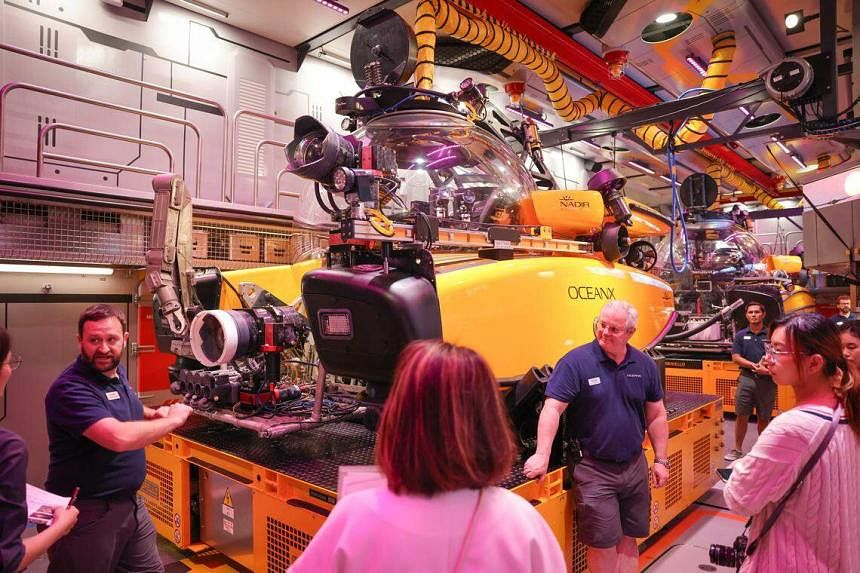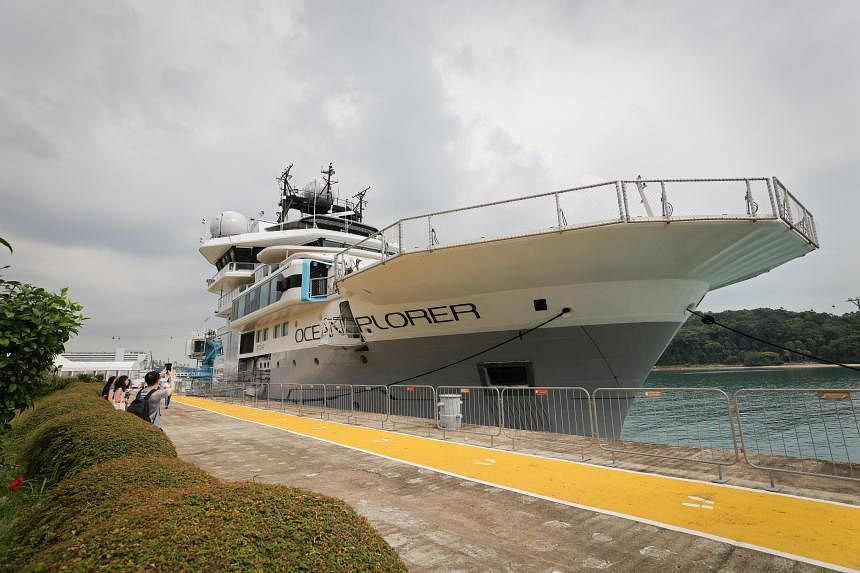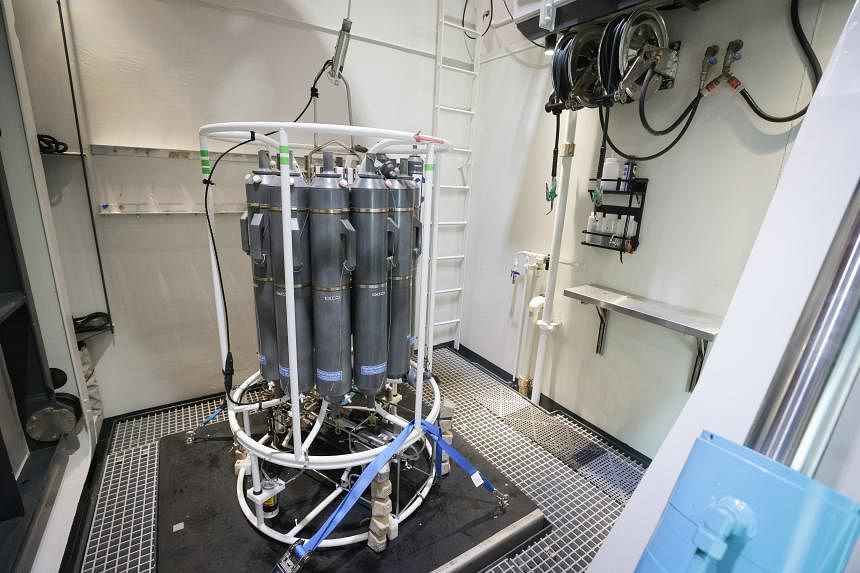SINGAPORE - To better understand the undersea marine life of South-east Asia, a research vessel designed to traverse the unknown reaches of the ocean will begin its expedition in the region from May.
South-east Asia’s oceans are among the most diverse and ecologically rich in the world, said Dr Vincent Pieribone, chief science officer and co-chief executive of OceanX, the non-profit ocean exploration initiative behind the vessel.
For instance, the region has one of the world’s most diverse fish populations, which thrive in nutrient-rich seagrass beds and coral reefs that are at risk of disappearing due to rapid economic growth and urbanisation.
“For this reason, South-east Asia is a global conservation priority,” Dr Pieribone said, adding that the region has more than 128,000km of coastlines.
The research vessel, OceanXplorer, is currently docked at Keppel Bay in Singapore to conduct scientific outreach and engagement programmes for more than 300 students, including those from Nanyang Technological University and the National University of Singapore.
It will begin its voyage to Indonesia in two months. The expedition will start from North and West Sumatra, and focus on quantifying the number of fish species in the ocean.
“Having a more complete picture of the region’s fisheries, such as the fishes’ breeding and nursing grounds, seasonal behaviour and overall health, can point the way to having more effective fisheries management that balances economic and nutrition needs with ocean health,” said Dr Pieribone.
Not only do the region’s seas serve as a major source of food and livelihood for hundreds of millions of people, but the fisheries and aquaculture sector also generates several billions of dollars in gross domestic product.
However, a large number of these fisheries are at risk from overfishing or destructive fishing practices.
Other areas of focus for the Indonesian expedition include looking at the biology and geology of the 2004 earthquake zones, seamounts (underwater mountains) and hydrothermal vents (fissures on a seabed where geothermally heated water discharges).
The researchers hope to eventually create a high-resolution map of the region’s active sea floor in order to improve understanding of future tectonic plate events, which can contribute to disaster monitoring efforts, said Mr Mark Dalio, founder and co-CEO of OceanX.
OceanX is currently in talks with Malaysia for a possible mission in the state of Pahang and is looking to extend its work to Thailand, the Philippines and a number of small island nations in the South Pacific over the next few years.
OceanX is also exploring a possible mission in the waters surrounding Singapore, said Mr Dalio.
The 87m-long OceanXplorer is capable of studying waters up to 6,000m in depth with the help of a remotely operated underwater vehicle that can traverse difficult terrain, such as underwater volcanoes or hydrothermal vents.
It holds two submersibles, which allow scientists to explore waters at a depth of 1,000m, so that they can observe species in their natural environment and collect data on these ecosystems.

Environmental samples that are taken can be immediately processed through genomic sequencing on board the vessel’s in-house laboratories.
Equipped with these facilities, researchers are able to collect data, study the samples and even produce a research paper while still on the vessel – instead of making multiple trips to the same location, which could take years.
OceanX, based in New York, aims to “explore the ocean and bring it back to the world” while providing impetus to drive marine conservation efforts.
Since it began its expeditions in 2012, researchers were able to film the elusive giant squid in the deep, whereas previously, its existence was known only from its dead carcasses washed up ashore.
During a voyage to the United Arab Emirates in December 2023, the OceanX team discovered species of corals there that were resilient against warming waters.
This could have implications for coral conservation or restoration efforts in other parts of the globe, said Mr Dalio.
Having a deeper understanding of these complex ocean environments can help countries to better manage and conserve their biodiversity hot spots, he added.
This could, hopefully, lead to the creation of more marine protected areas, which essentially restrict human activity in certain segments of the ocean to preserve the ecosystem.
At the United Nations’ Convention on Biological Diversity, or COP15, in Montreal in 2022, countries agreed on a global goal to conserve some 30 per cent of the world’s oceans with these protected areas by 2030, up from less than 3 per cent currently.




